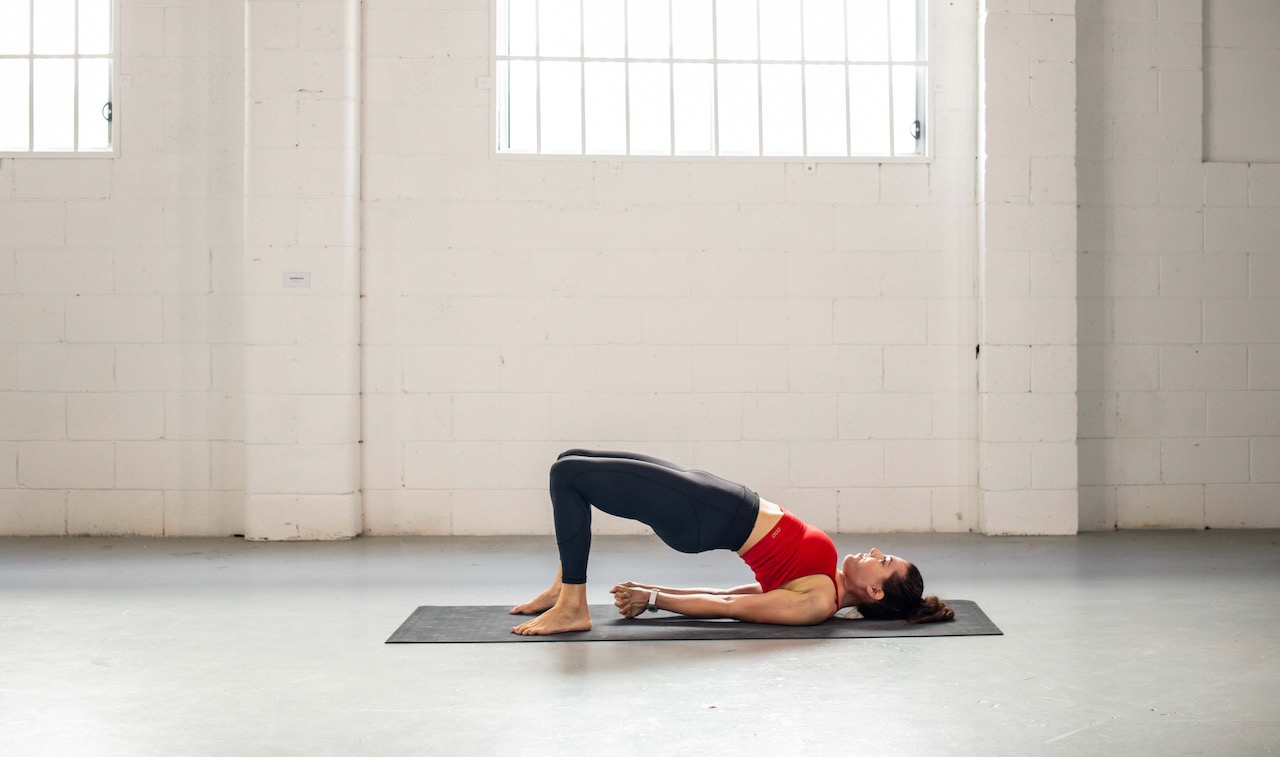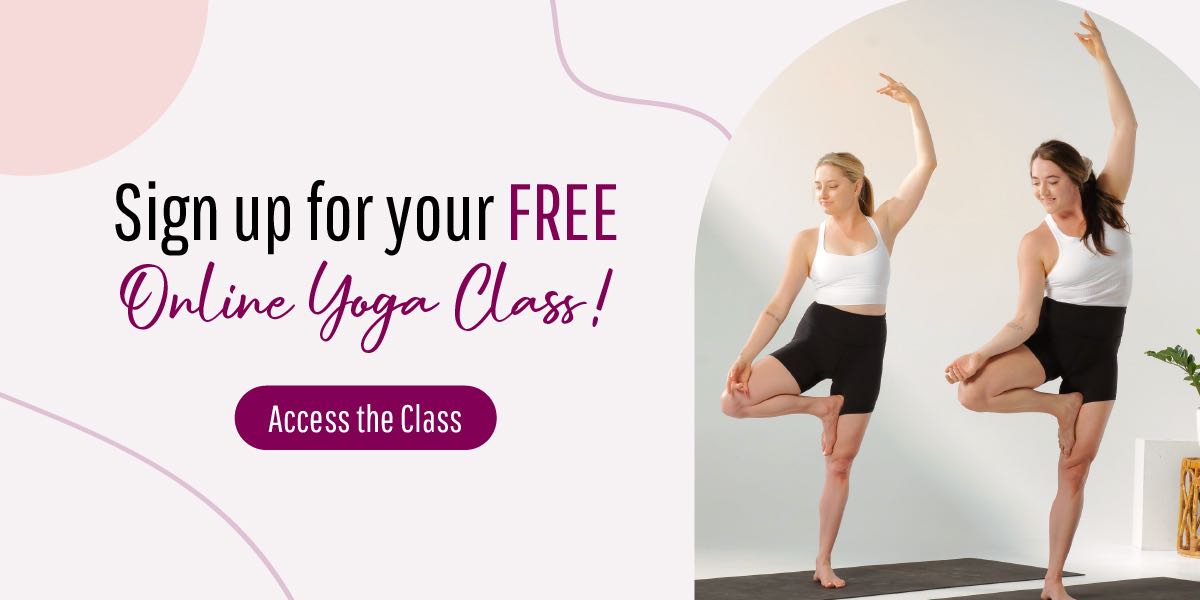A common fear about starting a yoga practice is not being flexible enough. But here’s the thing about yoga, when you have a consistent practice you will increase your flexibility!
Combined with physical postures, breath control, and meditation, yoga is a discipline that promotes health and wellbeing. It is practised to promote mental and physical health.
The word ‘yoga’ is derived from the Sanskrit word ‘yuj’, which, in this context, means ‘union’.
A Yoga practice is likely best described as a spiritual and physical activity that includes poses, breathing exercises, and meditation. And a person who is practising yoga is known as a yogi or yogini, or in our case, a MerryBod.
In the past, yoga was seen as only a spiritual practice. Nowadays, it is also seen as a form of physical exercise and strength training (this is what is called the asana practice within Yoga). Yoga improves flexibility by stretching the muscles and joints and connective tissue within the body.
The physical benefits of yoga can include:
- increased flexibility
- improved muscle strength
- better balance
- improved circulation
- reduced stress levels
- lowered blood pressure and heart rate
- as well as improved range of motion.
Yoga also has positive effects on mental health including reduced anxiety and depression.
There are many different types of yoga that can be practised depending on your goals. It can be done in group classes or at home with online classes via social media platforms like YouTube or membership apps like MerryBody.
Flow Yoga and How It Helps Increase Flexibility
Flow yoga is a type of yoga that incorporates the principles of vinyasa yoga. It is done on a mat, with standing and seated positions, with an emphasis on breath, meditation, and mindfulness.
The goal of flow yoga is to create a sense of flow between positions, one pose leads to another, hence the name. It’s all about increasing your flexibility and stretching your muscles. It also includes body weight resistance and strength building poses.
You’ll also increase your awareness of the present moment and connect the mind and body, as in, you’ll feel more IN your body, rather than IN your head.
Flow Yoga classes have a faster pace, with flowing movements and poses. In a typical flow yoga class, your certified yoga instructor will lead the class through a series of postures that challenge your body and mind. In the moments where you want to get out of the pose is where the practice really begins.
Yin Yoga and How It Works in Building Flexibility
Yin yoga is a slower type of yoga that helps you calm your mind and stretch your amazing body. You’ll find yourself holding poses for 3-5 minutes at least, these long holds stretch the connective tissue within the body.
The goal of Yin Yoga is to create a deep stretch in the connective tissues and fascia, which are not accessible within other types of yoga. It helps to release tension from the muscles while achieving deep tissue work.
The benefits of Yin Yoga are extensive and include improved flexibility, greater physical stamina, better joint mobility and a general sense of calm. It has also been found that when you stretch the joints for this longer period, you also pull the bones apart which in turn can increase bone density (so important as we age to focus on this).
Best Yoga Poses in Increasing Flexibility
Yoga is a great way to increase flexibility. There are many different poses that can help you reach your goals of being limber and agile.
Check out our list below, we’ve also included strengthening yoga poses as it’s just as important as increasing flexibility and in fact, strength is required for flexibility!
Here are some of the best yoga poses for flexibility:
Warrior Pose II or Virabhadrasana II
Is a great pose for both stretching and strengthening the hamstrings and hip flexors and glutes.
Why not try it out now?
Let’s start with the left foot out front, the left knee is bent to 90 degrees, the knee is above the ankle, not too far forward, not too far back. Shoulders are stacked above hips. Arms are extended out to the sides, the left hand tracks over the knee. Can you feel the fire and the stretch? Oh yes you can!
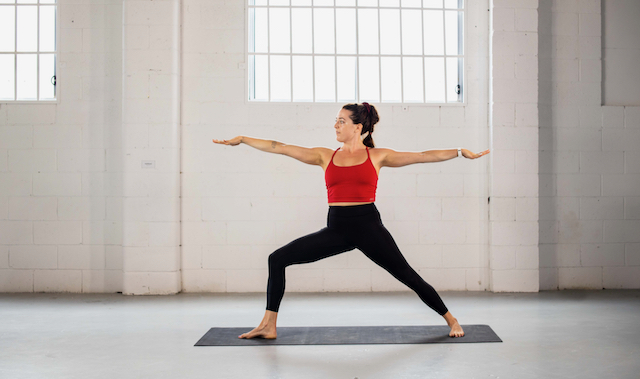
Bridge Pose, or Setu Bandhasana
Is a yoga posture that strengthens the booty and hamstrings while stretching the back and chest.
Start laying on your back, bend the knees, plant feet on the ground hip width. You should just be able to scrape your fingertips to your heels. Press your palms into the floor and lift your hips up off the ground and towards the sky. Squeeze your shoulder blades together. Hold for 5-10 breaths.
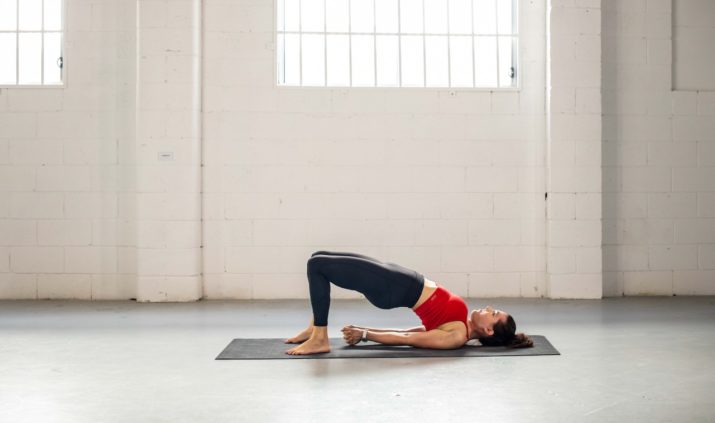
Seated Forward Fold, or Paschimottanasana
Is an excellent way to open up your hamstrings, hips, and lower back all at the same time.
It can also help improve posture and relieve tension in the spine and shoulders.
Start in a seated position, legs straight out in front, flex your feet. If you are super tight, bend the knees.
Fold your torso forward, reach towards the toes but keep integrity in your spine. It’s not about touching the toes and curving the back, it’s more about folding at the hip crease, maintaining a straight back.
Feel the stretch in your hamstrings, hips and lower back. You might only come down a little and this is totally fine!
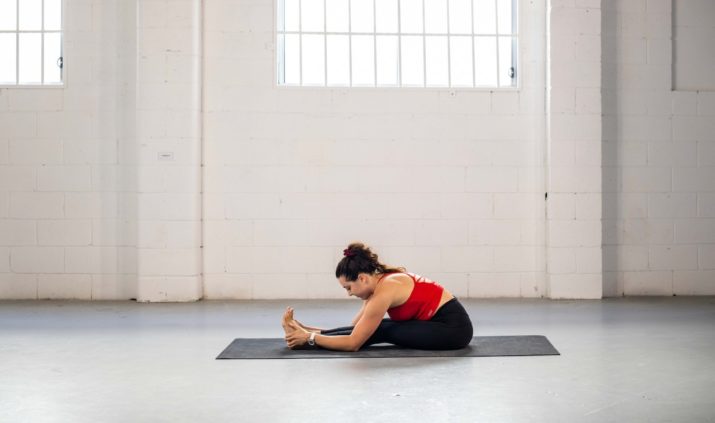
Downward Facing Dog or Adho Mukha Svanasana
This pose really stretches and works so many muscle groups!
You’ll stretch out your back muscles, chest, hamstrings and calves as well as strengthen your arms, shoulders, legs and core. It’s a foundational yoga posture that you’ll most likely experience in every full Yoga Flow class.
Start on your hands and knees, with your wrists under shoulders and your knees directly below your hips. Tuck the toes, then extend the legs and lift the hips toward the sky. Press hands into the earth, externally rotate your shoulders so your elbow creases feel like they face forward. Draw shoulders back and down. Feel the spine lengthen, keep a micro bend in the knees.
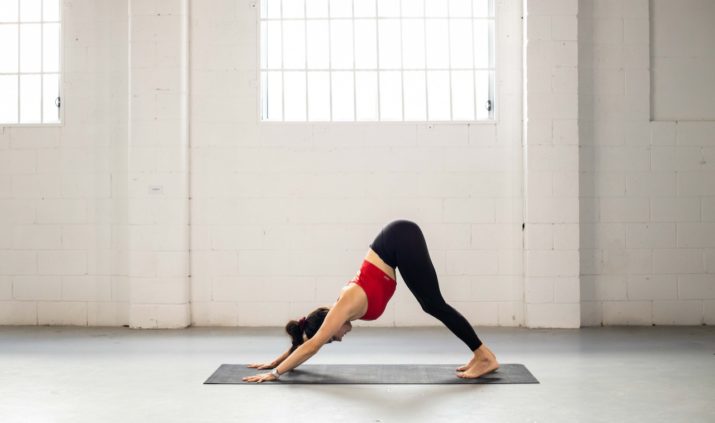
While these poses are a good starting point, keep in mind that it’s the whole ‘body and mind’ approach that makes yoga one of the most effective ways to improve your flexibility, as well as countless other benefits for your physical and mental health.
It’s also important to remember on your path towards improving flexibility that it’s about progress not perfection.
Your Yoga teacher or another practitioner may have a far greater range of motion than you. Maybe you see them reaching their face down to their thighs in a forward fold. They get their arms so far overhead they look like a pretzel? Or maybe they slide into the splits like a gold medal gymnast, remember you are on your path, you’re practicing yoga to suit your body and goals.
No matter where you are at, simply beginning is the most important step!
We’d LOVE to see you on the mat, in fact why not try out this Flexi Legs Yoga Class today?!
Let us know how you go! And if you love it, SIGN UP HERE and we will send you another Yoga class to your inbox.
Always merrymaking,
Emma + Carla

